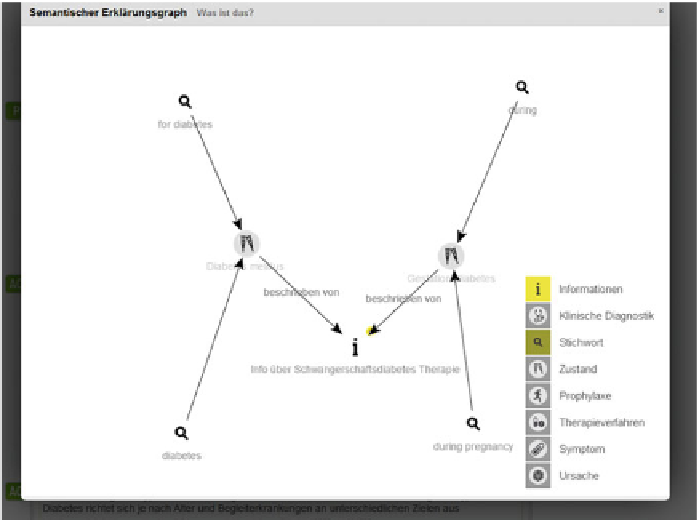Information Technology Reference
In-Depth Information
example screenshot, the following concepts have been detected from the search
query: malformation (Biçimsizlik), pregnancy (Gebelik), non-alcoholic fatty liver
disease (non-alkolik yaglı karaci ger hastalı gı), and gout (Gut) in the context of nutri-
tion (beslenme) and pregnancy (gebelik). Furthermore, the following context has
been extracted from Selma's profile that will be considered when ranking search
results: home town (Berlin) and pre-existing medical conditions (Diyabet Tip II,
Type II Diabetes). Under this visualization, the interface provides a topic box con-
taining professionally edited information for the identified concepts. Under this topic
box, the search results are displayed in descending order of relevance. The user can
adjust their language setting by dragging a slider seamlessly between two languages.
This sets a gradual preference of one language over the other and can exclude a
language completely if dragged to the very end of the other language. Changing this
setting immediately affects the search results and re-sorts the result list to reflect
different language preferences. The user can seamlessly observe how search results
are rearranged based on their language settings.
Each search result offers a button that when clicked shows a view of the paths
of the Health Ontology that were traversed to find this search result. A screenshot
is shown in Fig.
3.4
. The semantic graph allows the user to understand
why
this
search result is relevant to their search query. It also makes transparent the under-
lying workings of the ontology. Additionally, the interface enables users to visually
Fig. 3.4
Graph search explanation

Search WWH ::

Custom Search